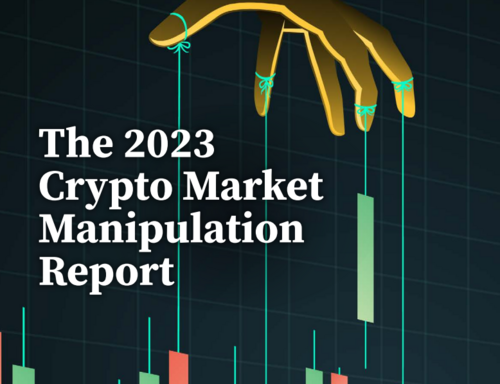
The Dark Secrets Behind Crypto Market Manipulation

Cryptocurrencies have been at the center of extensive debates in recent years, with much of the discussion revolving around their value and regulatory aspects. However, there is a pressing need to delve into the issue of market manipulation, with a particular focus on the behavior of cryptocurrency exchanges.
The spotlight on crypto and market abuse intensified in late 2022 following the collapse of FTX. This exchange, which had, at one point, held the position of the world's third-largest cryptocurrency exchange by trading volume during its three-year existence, experienced a dramatic downfall. Its founder and CEO, Sam Bankman-Fried, now faces a series of serious charges, including conspiracy to commit commodities and securities fraud and conspiracy to defraud the United States and engage in campaign finance violations. These charges stem from allegations that Bankman-Fried defrauded investors about $1.8 billion. FTX has been entangled in Chapter 11 bankruptcy proceedings in the United States since November of last year.
The high-profile and large-scale nature of FTX's collapse has triggered a wave of inquiries into the functioning of cryptocurrency exchanges and the risks associated with market manipulation. It's important to note that market manipulation is not a phenomenon exclusive to crypto exchanges; it's an illicit practice in the financial markets with a historical presence dating back centuries.
In the ever-evolving world of cryptocurrency, a question that looms large in the minds of new investors and enthusiasts alike is whether the crypto markets are manipulated. The topic has been the subject of intense debate and speculation, with proponents on both sides presenting their arguments. In this article, we aim to shed light on this intriguing issue, examining the various factors and evidence that contribute to the perception that the crypto markets are indeed manipulated.

Source: Solidus Labs
Insights from the Solidus Labs Report
Before delving into the specifics of market manipulation, it's essential to understand the context in which the crypto markets operate. Cryptocurrency, most notably Bitcoin, has gained unprecedented popularity and attention in recent years. Its decentralized nature and the potential for substantial financial gains have attracted investors from all walks of life. With the total market capitalization of cryptocurrencies reaching astronomical heights, it's no wonder that questions about manipulation have arisen.
It's important to understand the key findings of a recent report by Solidus Labs, a crypto research firm. The report, aptly titled "The 2023 Crypto Market Manipulation Report," was published by Solidus Labs in June. Although some time has passed since its publication, the facts and figures remain largely relevant.
The report is divided into two main sections: insider trading and wash trading. Insider trading involves individuals with privileged information trading to their advantage. The report highlights the significance of addressing market manipulation to foster crypto adoption, especially considering the ongoing discussions about exchange-traded funds (ETFs) in the crypto space. The Securities and Exchange Commission (SEC) has been hesitant to approve crypto ETFs due to concerns about market manipulation. While the report acknowledges that the issue may be up for debate when it comes to Bitcoin (BTC), it suggests that most altcoins are susceptible to manipulation.
The report identifies a startling statistic: 56% of ERC-20 tokens listed on crypto exchanges in 2021 showed evidence of insider trading, even on major exchanges. The authors of the report discovered a network of 51 interconnected wallets believed to be responsible for a significant portion of this insider trading activity. Unfortunately, the report does not specify which exchanges were analyzed, leaving some details unclear.
Insider trading, as defined by the report, includes any wallet that consistently buys a token shortly before it is listed on a major exchange. Surprisingly, the subsequent insider trading often occurred on decentralized exchanges (DEXs) rather than centralized exchanges (CEXs). However, only a few cases involved insiders selling their tokens on the exchanges where the tokens were listed. This might be attributed to fears of detection by insider trading detection mechanisms on these exchanges.
A case study in the report highlights one individual or entity involved in insider trading who conducted 14 listings using DEXs and 22 more using CEXs. Interestingly, the gains from this insider trading activity were not as substantial as one might expect, with an estimated profit of $300,000 against an investment of $2.7 million. This suggests that the individual or entity involved likely possessed substantial financial resources, potentially indicating an institution or a seasoned actor in the crypto space.
Another noteworthy discovery in the report was the identification of 54 additional wallets created specifically for insider trading. These wallets were found to be associated with transactions related to tokens about to be listed or newly listed tokens. The entities behind these wallets used various methods to obscure their activities, including privacy protocols like Tornado Cash, smart contract-enabled privacy coins like Secret Network, and crypto exchanges with lax Know Your Customer (KYC) requirements.

Source: Solidus Labs
The report also raises the possibility that crypto exchanges themselves might be involved in insider trading, a serious allegation that has been made against some exchanges in the past. The authors acknowledge that some of the wallets identified may have been purely coincidental, but the overall pattern suggests insider trading. They speculate that token issuers, market makers, and investment firms could be the entities behind these wallets.
Moving on to the section of the report focusing on wash trading, it reveals some eye-opening statistics. Since 2020, liquidity providers on Ethereum have engaged in wash trading involving over $2 billion worth of cryptocurrencies. This behavior was identified in 20,000 tokens, taking place in 67% of the over 30,000 liquidity pools analyzed. Wash trades accounted for an average of nearly 15% of trading activity in these pools.
Wash trading is a form of market manipulation where an entity simultaneously buys and sells the same asset, creating a deceptive impression of market activity while no actual change in ownership occurs. Notably, the authors believe that the extent of wash trading on DEXs on Ethereum is even higher, but the reported data only covers 1% of the analyzed information.
The report further suggests that wash trading is detectable and preventable in the decentralized finance (DeFi) space. It argues that DeFi protocols could implement similar regulatory measures as centralized exchanges to combat wash trading. Additionally, on-chain analysis can help identify suspicious liquidity providers.

Source: Wash trading in centralized crypto exchanges – Cepr.org
So, what does all of this mean for the crypto industry? The short answer is that these revelations are not good news for DEXs. However, it's worth noting that the report appears to focus exclusively on insider trading and wash trading on DEXs, whereas similar issues have been found on CEXs, with fake trading volumes being a significant concern.
Transparency is a critical factor in regulating market manipulation, and DEXs, with their publicly viewable and traceable transactions, have the potential to be more transparent and less prone to manipulation than centralized exchanges. DeFi protocols are also exploring ways to implement regulatory measures at the smart contract level.
While market manipulation is a challenge that the crypto industry must address, it is a problem that can be tackled with the right tools and regulations. DEXs are gradually working towards mitigating this issue, and their transparency can serve as a model for the broader crypto ecosystem. However, the crypto industry must also confront larger issues, including centralization, privacy concerns, and censorship resistance. As blockchain analytics companies like Solidus Labs lead the way in addressing market manipulation, the industry can move forward with greater transparency and accountability.
Ultimately, market manipulation is one of the more solvable issues in the crypto space, and once it is effectively addressed, attention can be directed towards other critical challenges facing the industry.
Summary
The debate over whether the cryptocurrency markets are susceptible to manipulation continues to persist, and while no definitive consensus has been reached, there are indeed compelling reasons to consider the possibility of manipulation within these markets. Several factors contribute to this perception, shedding light on why investors remain cautious when participating in the crypto space.
First and foremost, the absence of comprehensive regulatory oversight is a fundamental concern. Unlike traditional financial markets that operate under strict regulatory frameworks enforced by government authorities, cryptocurrency markets exist in an unclear regulatory landscape. This regulatory void creates an environment in which individuals or entities may exploit loopholes and engage in illicit practices without fear of legal repercussions. This lack of oversight can significantly contribute to the perception of vulnerability to manipulation.
Another prominent factor that reinforces the perception of market manipulation is the prevalence of "pump and dump" schemes. These schemes involve artificially inflating the price of a cryptocurrency through coordinated buying, often based on misleading or exaggerated information. Once the price reaches its zenith, those orchestrating the scheme sell their holdings at a profit, resulting in a swift and severe decline in price. These schemes not only deceive investors but also erode trust in the integrity of the market.
The influence of crypto whales, individuals or entities holding substantial amounts of a specific cryptocurrency, is another element contributing to the perception of manipulation. These whales possess the capacity to sway market sentiment and price movements through their significant trades. A single large sell order from a whale can trigger panic selling among smaller investors, leading to rapid price fluctuations. This unequal distribution of power can lead to a sense of vulnerability among market participants.
Furthermore, the lack of transparency on many cryptocurrency exchanges adds to the perception of potential manipulation. Some exchanges do not provide adequate information about their operations, trading volumes, or even the identity of their owners. This opacity can raise suspicions about the fairness and integrity of these platforms, further fueling concerns about market manipulation.
In light of these factors, it is prudent for investors in the cryptocurrency space to exercise caution and diligence. Conducting thorough research and due diligence before participating in any cryptocurrency investment is essential. Being aware of the risks associated with market manipulation and staying informed about the latest developments in the industry can help investors make more informed decisions and protect their interests.
While the cryptocurrency market offers exciting opportunities, it is not without its challenges. Acknowledging the existence of potential manipulation and taking proactive measures to mitigate these risks is a crucial step for investors looking to navigate this dynamic and evolving landscape successfully.
This article is provided for informational purposes only. It is not offered or intended to be used as legal, tax, investment, financial, or other advice.


